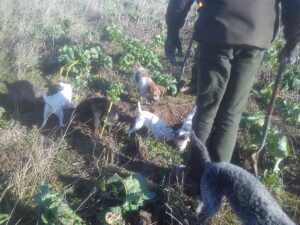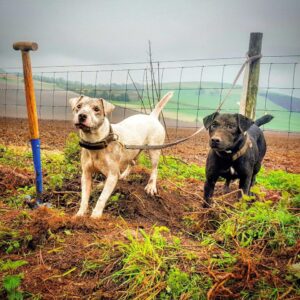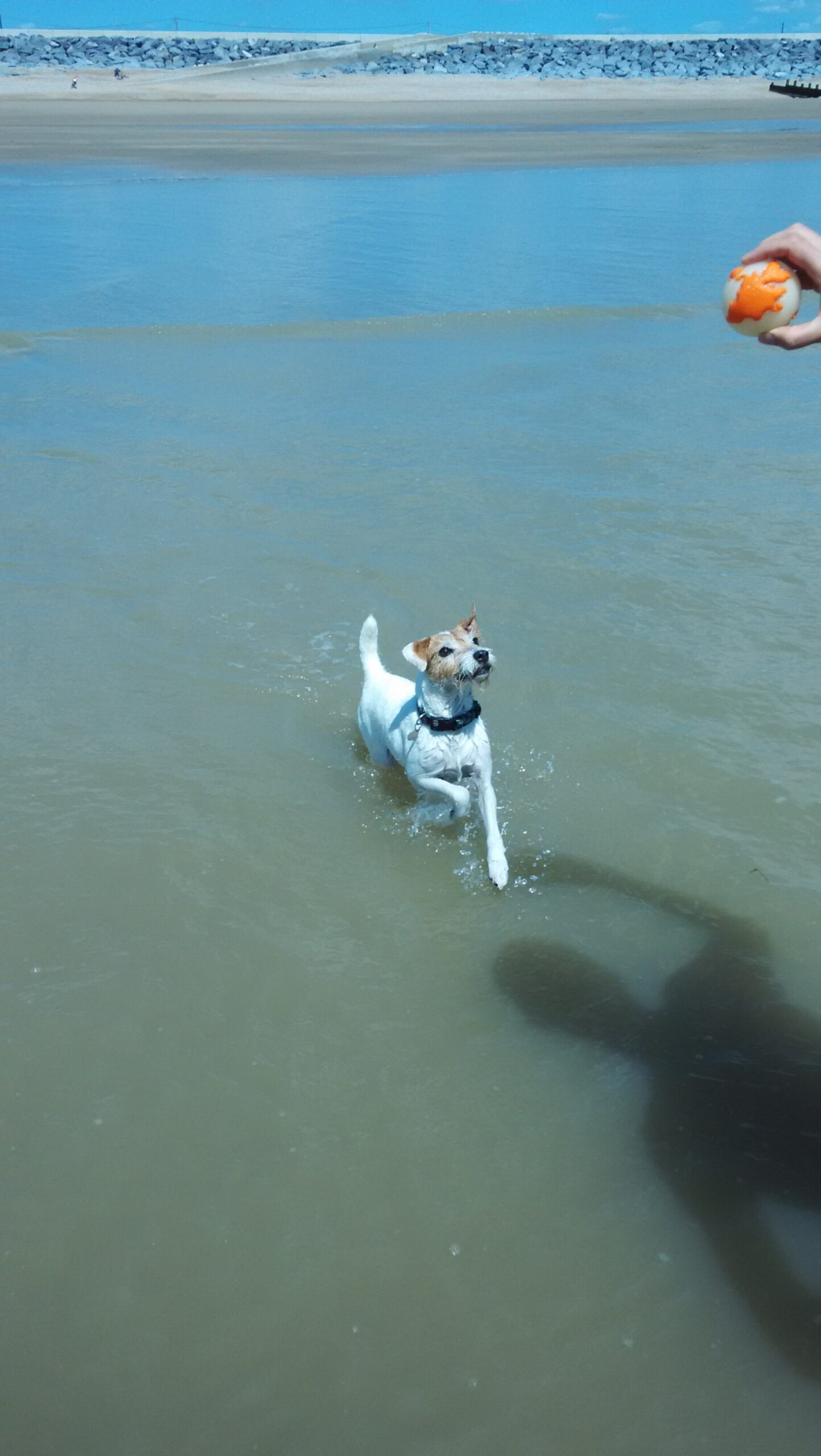Why you shouldn’t clip a handstripped dog
1. Skin Health
Handstripped breeds do not shed that much like other breeds do – yes they still shed, but not much! Shedding means losing dead hair at the end of the life-cycle (when the hair gets into the telogen or exogen state).
|
The hair just stays in the follicle, will clog it, so that natural oils mix with debris and the natural ecosystem on the dog’s skin surface. This can lead to pustules, inflammation and other unwanted and unhealthy side effects. Also this slows the production of new hair considerably down. Where should the new hair go? It’s just not enough space there. This is one of the reasons why a so called “rolled coat”, a coat which is continuously worked on, is better than stripping once or twice a year. |
 |
2. Coat Texture
When the guard hair is cut (scissored, clipped or cut with a sharp stripping knife) – all hair, the undercoat and the top coat will end up with the same length. The guard hair – also known as Topcoat – will stay in the skin but with the thin part.
To show the difference between stripped and cut hair:
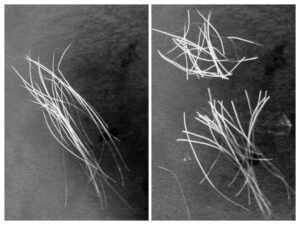 |
Left side is hair I pulled out of my dog’s tail. The thin end is the dogs end. This is hair I call “dead”: end of it’s lifecycle, no use for the dog anymore and waiting to come out and make space for new growth. If you look quite closely you can see a tiny bulb on the end. This is sometimes called “club hair”. On the right side I just cut the same hair. You can see what stays on the dog and in the follicle of the skin is much thinner. |
As this is white hair you would not see a change in colour, but with coloured hair, you will. Melanin, responsible for colour, is inserted only during the growth phase (the thick part of the hair).
You can also see that cut hair (regardless how it has been cut: scissors, clippers or a sharp tool) have a flat end in contary to the stripped hair, which has a pointy end.
3. Coat Colour
Colour of the coat is embedded into the hair (cortex layer) during the hair growth. The more the hair comes to the end of its lifecycle the less colour is embedded. So if you cut the guard hair, you will be left with “washed out” colour. The fluffy-downy undercoat has less colour anyway, so this will also not contribute to preserve any kind of colour.
This here is a clipped coat. The dog is tri-colour by nature. Black, tan and white.
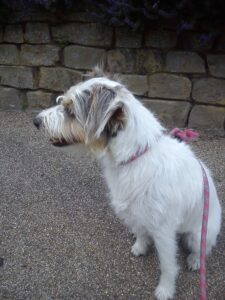
This is how the same dog looks when handstripped and wet:

4. Coat Function and texture of hair
The dogs’ coat serves a natural function: to keep them cool in the summer and warmer in the winter (thermoregulation) and protect the skin from the elements. Most of the handstripped breeds have additional, breed related and genetically determined objectives, regardless which job the have now – be it pet, agility champion, flyball runner, show dog or even pest controller on a farm.
This type of coat and its makeup serves to protect them from the undergrowth (like brambles, nettles) or adversaries. Rats tend to bite quite vicious if they are threatened and it’s better to catch a mouthful of dead hair than getting to the dog.
Try to get the dog wet. With a clipped off dog you will mostly see skin, so hardly any insulation or protection from the elements – with a handstripped dog even a thoroughly wet coat keeps most of its features, ideally you cannot even see a piece of skin.
